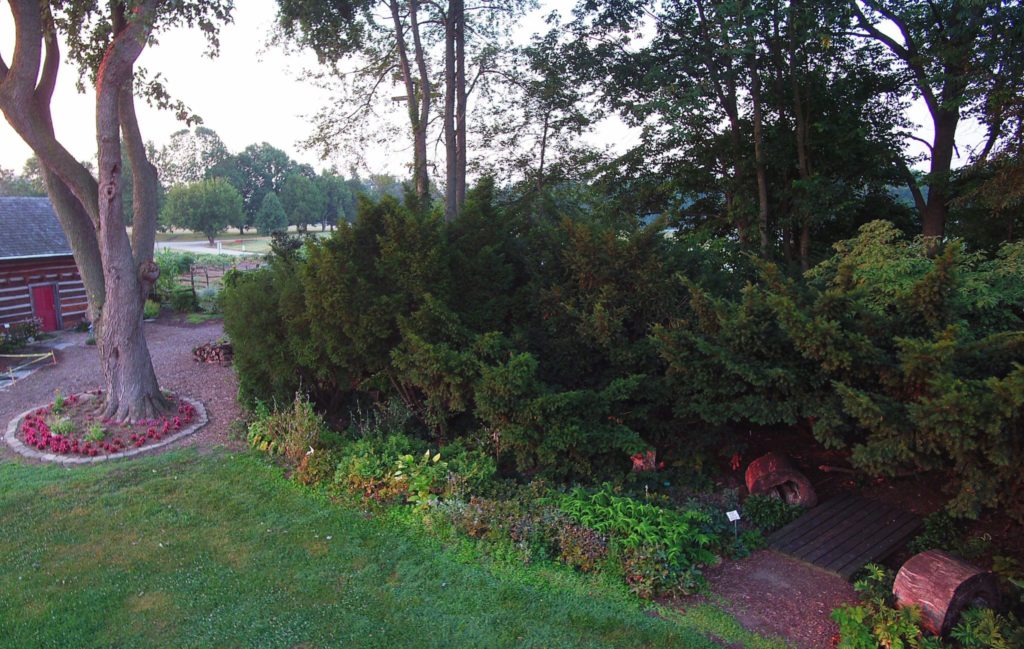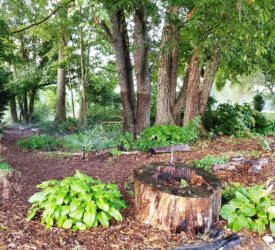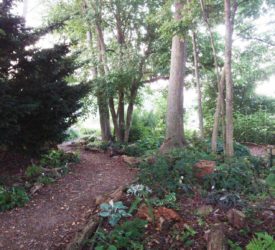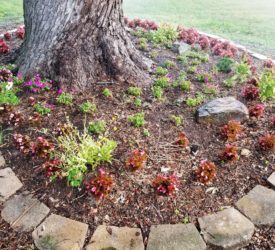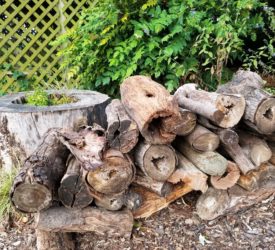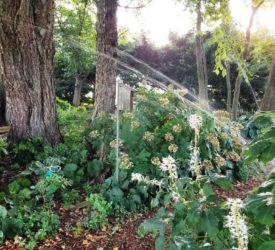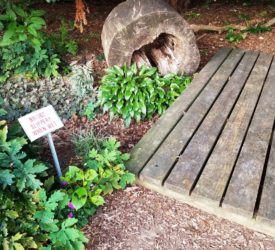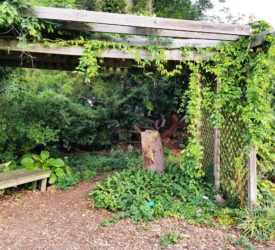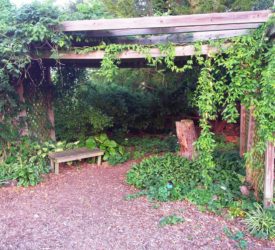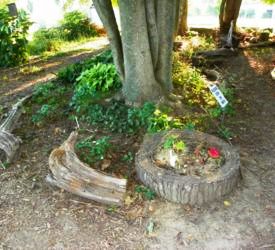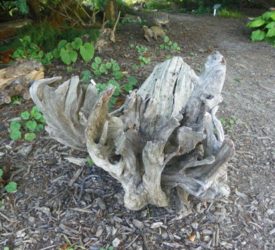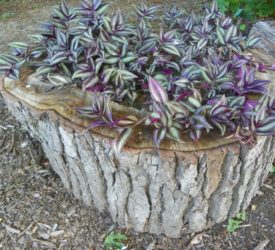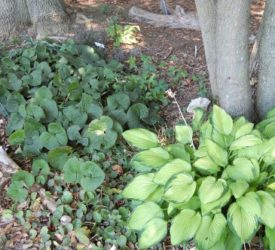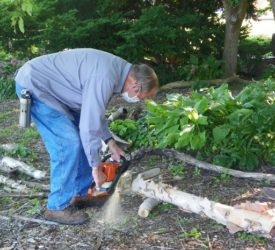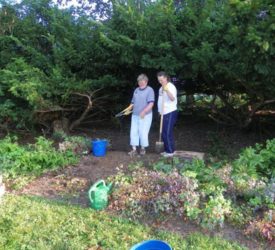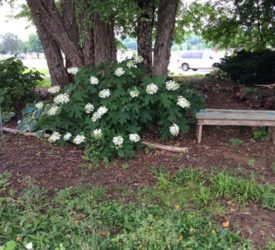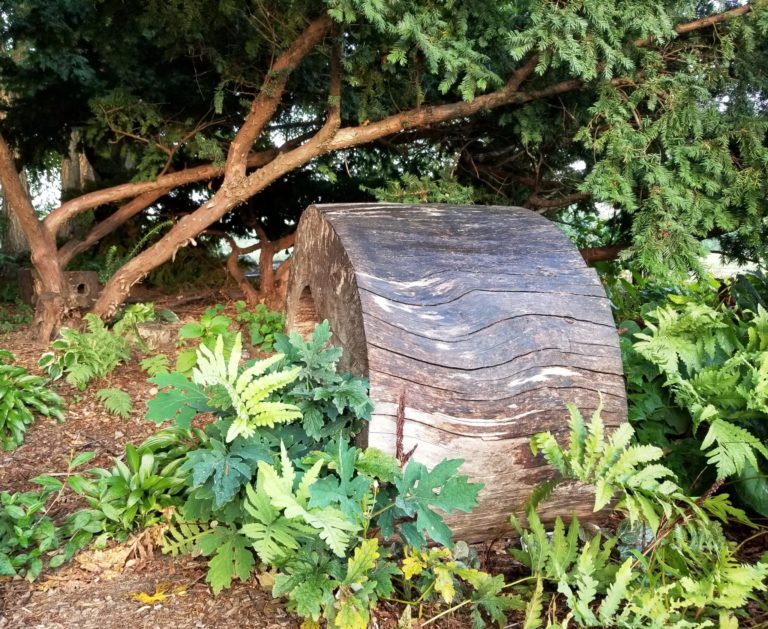 Shade Garden
Shade GardenWhile full-sun vegetable and perennial gardens have their functions, nothing can take the place of a tranquil, quiet corner of the yard with sweet scents, nearly fluorescent colors, and, best of all, its cool shade. There is a huge selection of suitable plants, shrubs, ground covers, and even under-story trees that will do beautifully in even fairly dense shade.
Every landscape differs in what type of shade it holds and also where the shade is located.
- Light shade areas are those which move across the ground as the sun moves across the sky. These areas get their light in intervals throughout the day. Some full-sun plants will do fine in these conditions, and depending on the location and climate, they may actually appreciate the intermittent relief from the hot sun. Astilbe, begonias, bleeding heart, early crocus, euphorbia, hostas, impatiens, snowdrops, and Star of Bethlehem all do well in light shade.
- Open shade areas are those you would find on the northern side of a house or at the edge of a tree line. Azaleas, rhododendrons, hostas, and hydrangeas may do well.
- Deep shade is very easy to spot. It is in that area of a yard that basically gets no sunlight at all, due to structures, thick hedging, or what have you. When you are facing deep shaded areas, the plant selection is more limited. But many ferns, wild gingers, ivies, hostas, lungworts, and other plants will thrive.
So no matter what type of area you’re dealing with, whether it’s one with light, open, medium, or deep shade, remember that there is a wide range of choices available to make your shade garden a cool, relaxing and inviting space.
SPANISH TRANSLATION:
Jardín de sombra
Coordinado por Kay Haller
Si bien los jardines de vegetales y plantas perennes a pleno sol tienen sus funciones, nada puede reemplazar un rincón tranquilo y silencioso del jardín con aromas dulces, colores casi fluorescentes y, lo mejor de todo, su sombra fresca.
Hay una gran selección de plantas adecuadas: arbustos, cubiertas de suelo e incluso árboles de sotobosque que funcionarán maravillosamente incluso en una sombra bastante densa. Cada paisaje difiere en qué tipo de sombra tiene y también en dónde se encuentra la sombra. ●
Las áreas de sombra ligera son aquellas que se mueven por el suelo cuando el sol se mueve por el cielo. Estas áreas reciben su luz en intervalos a lo largo del día. Algunas plantas de pleno sol funcionarán bien en estas condiciones, y dependiendo de la ubicación y el clima, en realidad pueden apreciar el alivio intermitente del sol caliente. Los astilbes, begonias, corazón sangrante, crocus temprano, euforbia, hostas, alegría de la casa, campanillas de invierno y estrella de Belén se desarrollan bien en sombras claras.
Las áreas de sombra abierta son aquellas que uno encontraría en el lado norte de una casa o en el borde de una línea de árboles. Las azaleas, los rododendros, las hostas y las hortensias pueden funcionar bien en estos lugares.
La sombra profunda es muy fácil de detectar. Está en esa área de un jardín que básicamente no recibe luz solar, debido a estructuras, setos gruesos o lo que sea. Para las áreas de mucha sombra, la selección de plantas es más limitada, pero aquí prosperarán muchos helechos, jengibres silvestres, hiedras, hostas, pulmonarias y otras plantas.
Por ende, no importa con qué tipo de área uno esté tratando, ya sea una con sombra ligera, abierta, media o profunda, recuerde que hay una amplia gama de opciones disponibles para hacer de su jardín de sombra un espacio fresco, relajante y acogedor.

